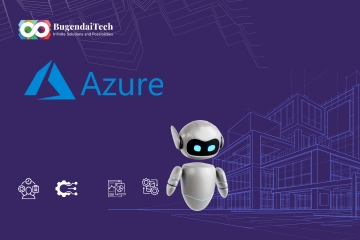The goal of SambaSafety is to reduce risk using data insights to foster safer communities. For businesses with both commercial and non-commercial drivers, SambaSafety has been the top supplier of cloud-based mobility risk management software in North America since 1998. More than 15,000 international employers and insurance companies rely on SambaSafety for risk pricing solutions, online training, deep risk analytics, and driver risk and compliance monitoring.
SambaSafety helps insurers make educated underwriting decisions and background screeners conduct precise, adequate pre-hire checks. Employers can also benefit from gathering, correlating, and analyzing driver records, telematics, corporate, and other sensor data, which helps them better enforce safety standards and reduce claims.
Different drivers have different risk profiles, and your risk profile increases with the amount of time you spend driving. The data scientists at SambaSafety have created intricate and exclusive modeling tools that precisely measure this risk profile.
However, they needed assistance to implement this approach for batch and real-time inference in a dependable and consistent way.
This blog post will go over how SambaSafety deployed their current data science application for batch inference in AWS machine learning (ML) and continuous integration and delivery (CI/CD) tools. SambaSafety worked with AWS Advanced Consulting Partner Firemind to deliver a solution that used AWS CodeStar, AWS Step Functions, and Amazon SageMaker for this workload.
The data science team at SambaSafety didn’t need to alter their current development process to benefit from continuous model training and inference thanks to AWS CI/CD and AI/ML technologies.
Customer Use Case
The data science team at SambaSafety has long used data to inform business decisions. Thanks to the intelligent models built by highly qualified scientists and engineers, their platform’s risk analysis is now of higher quality. However, this team encountered difficulties unrelated to data science and required assistance integrating their current data science methodology with a continuous delivery system.
The data science team at SambaSafety kept a number of script-like artifacts up to date as part of their development process. These scripts carried out several functions, such as feature engineering, data preprocessing, model construction, model tuning, validation, and comparison. All these scripts were manually executed when fresh data for training entered their environment.
Furthermore, no model versioning or hosting for inference was done by these scripts. The data science team at SambaSafety had created manual workarounds to encourage introducing new models into production, but this procedure grew labor- and time-intensive.
Automating the manual chores involved in maintaining current models was necessary for SambaSafety to free up its highly trained data science team to innovate on new ML workloads. Moreover, the system had to mimic the data science team at SambaSafety’s human workflow and make decisions on what to do next, depending on the results of these scripts.
Lastly, the solution needed to work with their current code base. The data science team at SambaSafety utilized an external code repository solution from AWS; the pipeline’s final configuration required to be smart enough to start acting upon changes made to their code base, primarily written in R.
Solution Overview
The following illustration illustrates the resulting armature, which was informed by one of the numerous open-source infrastructures maintained by Firemind, SambaSafety’s delivery mate. The result delivered by Firemind for SambaSafety’s data wisdom platoon was erected around two ML channels.
The first ML channel trains a model using SambaSafety’s custom data preprocessing, training, and testing scripts. The performing model artifact is stationed for batch and real-time conclusion to model endpoints managed by SageMaker.
The alternate ML channel facilitates the conclusion request to the hosted model. In this way, the channel for training is severed from the channel for conclusion. One of the complications in this design is replicating the homemade way taken by the SambaSafety data scientists.
The platoon at Firemind used Step Functions and SageMaker Processing to complete this task. Step Functions allows you to run separate tasks in AWS using AWS Lambda functions, Amazon Elastic Kubernetes Service (Amazon EKS) workers, or, in this case, SageMaker. Within the SageMaker ecosystem, tasks that execute on managed ML cases can be defined using SageMaker Processing.
Every Step Function task run keeps track of its logs, run history, and information about the job’s success or failure. The platoon used Step Functions and SageMaker, together with Lambda, to handle the robotization of training, tuning, deployment, and conclusion workloads.
The only remaining piece was the nonstop integration of law changes to this deployment channel. Firemind enforced a CodeStar design that maintained a connection to SambaSafety’s being a law depository. When the sedulous data wisdom platoon at SambaSafety posts an update to a specific branch of their law base, CodeStar picks up the changes and triggers the robotization.
Conclusion
SambaSafety’s new serverless MLOps channel significantly impacted its delivery capability. Integrating data wisdom and software development enables its brigades to work together seamlessly. Its automated model deployment reduced delivery time by over 70 percent.
SambaSafety connected with AWS account brigades with their problem. The AWS account and results armature brigades worked to identify this result by sourcing it from our robust mate network. Connect with your AWS account platoon to identify analogous transformative openings for your business.






Comments